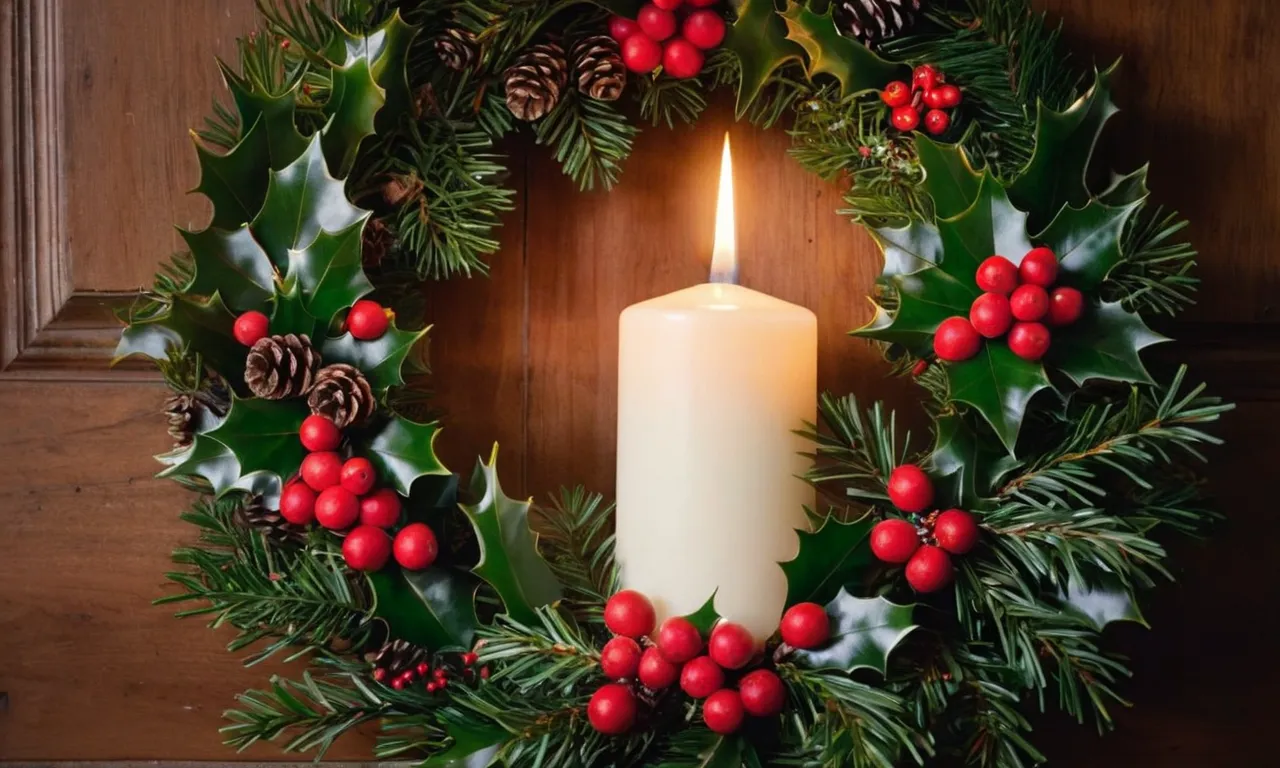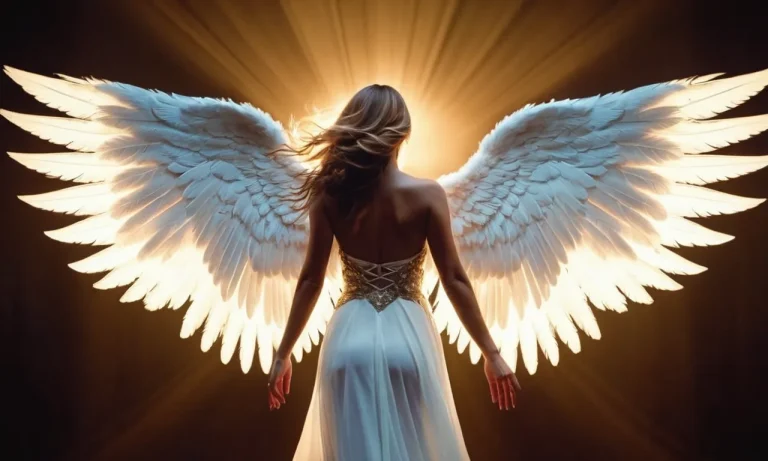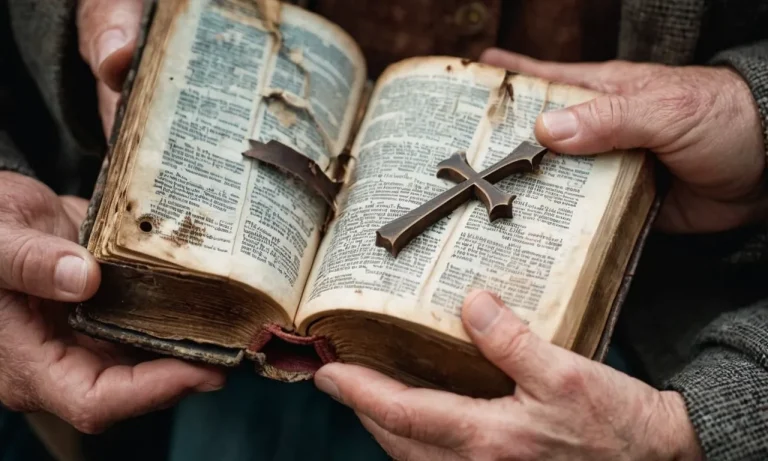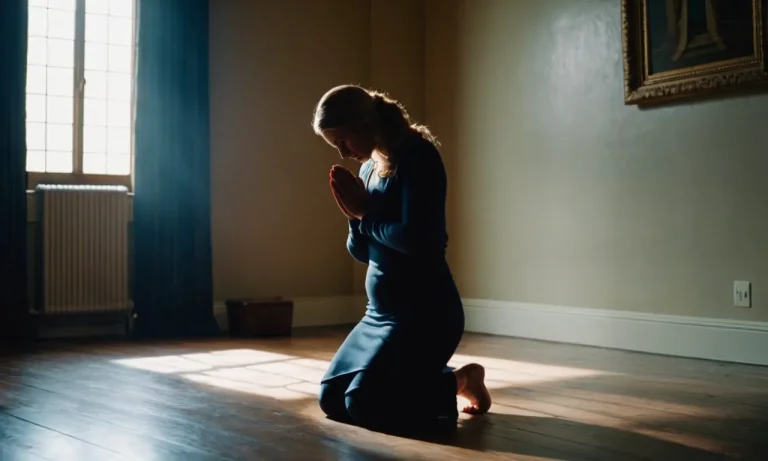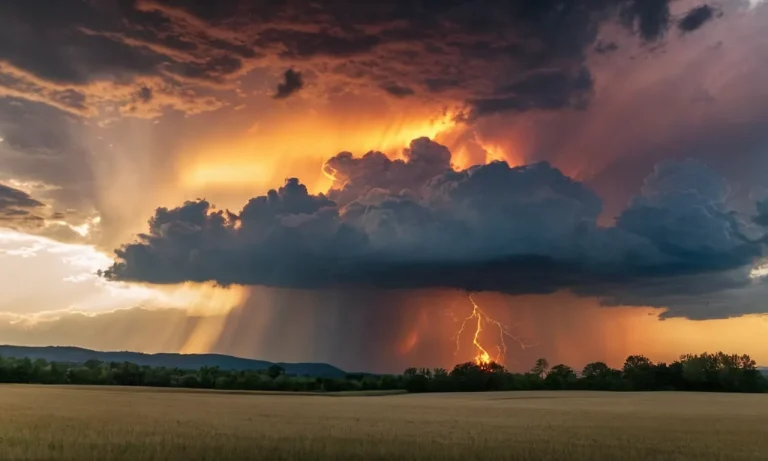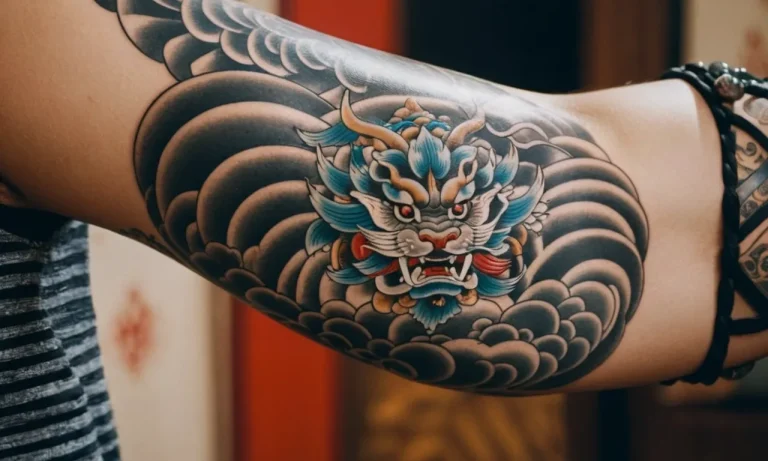Symbols Of Christmas And Their Meaning: A Comprehensive Guide
Christmas is a time of joy, celebration, and cherished traditions. From the twinkling lights adorning homes to the festive decorations that fill the air with holiday cheer, the symbols of Christmas are deeply rooted in our cultural heritage.
Whether you’re a devout Christian or simply embrace the spirit of the season, understanding the meaning behind these iconic symbols can enrich your experience and deepen your appreciation for this beloved holiday.
If you’re short on time, here’s a quick answer to your question: The symbols of Christmas, such as the Christmas tree, mistletoe, holly, and the Nativity scene, have their roots in ancient traditions and religious beliefs, each carrying a unique meaning that has been passed down through generations.
In this comprehensive guide, we’ll delve into the fascinating stories and symbolism behind the most iconic Christmas symbols, exploring their origins, cultural significance, and how they have evolved over time.
From the evergreen Christmas tree to the jolly figure of Santa Claus, we’ll unravel the rich tapestry of traditions that have woven themselves into the fabric of this joyous celebration.
The Christmas Tree: A Symbol of Everlasting Life
Origins and Symbolism
The Christmas tree, a beloved symbol of the holiday season, has roots dating back to ancient times. Its origins can be traced to pagan rituals that celebrated the winter solstice and the return of the sun.
Evergreen trees, with their unwavering greenery, were seen as a symbol of everlasting life and rebirth. According to the History Channel, the modern Christmas tree tradition is believed to have started in Germany in the 16th century, when devout Christians began decorating evergreen trees with apples and other ornaments to celebrate the holiday.
Today, the Christmas tree stands as a powerful representation of hope, resilience, and the enduring spirit of the holiday season. Its evergreen branches serve as a reminder that even in the darkest and coldest of times, the promise of new life and renewal remains.
The twinkling lights adorning its boughs symbolize the light of Christ and the warmth of love shared during this festive period. 😊
Decorating Traditions
The act of decorating the Christmas tree has become a cherished tradition in itself. Families often gather together to adorn the tree with a myriad of ornaments, each one holding a special meaning or memory.
According to a survey by the American Christmas Tree Association, approximately 94 million households in the United States displayed a Christmas tree in 2021. From handcrafted ornaments passed down through generations to store-bought baubles reflecting the latest trends, the tree becomes a canvas for personal expression and storytelling.
The topping of the tree with a star or an angel is a symbolic act that represents the guiding light of faith and the heavenly host that announced the birth of Christ. The placement of gifts beneath the tree, a tradition with roots in ancient pagan rituals, adds an element of anticipation and joy, especially for children.
👏
Modern-Day Variations
While the traditional evergreen tree remains a staple, modern times have brought about various adaptations and variations. Artificial trees, made of materials like plastic or aluminum, have gained popularity for their convenience and reusability.
Some households opt for alternative “trees” crafted from unique materials like books, wine bottles, or even recycled materials, adding a touch of creativity and eco-friendliness to the tradition.
Regardless of its form or adornments, the Christmas tree remains a beloved symbol that brings families and communities together. It serves as a reminder of the enduring spirit of hope, love, and renewal that lies at the heart of the holiday season.
As the twinkling lights and ornaments reflect the warmth of cherished memories, the Christmas tree continues to be a timeless tradition that will be passed down for generations to come. 🎉
Mistletoe: A Tradition of Love and Fertility
Ancient Pagan Roots
Mistletoe, the unassuming little plant with waxy white berries and green leaves, has a rich history steeped in ancient pagan traditions. Long before it became a Christmas custom, mistletoe was revered by the Druids, Celtic priests who believed it possessed mystical powers.
They associated it with fertility and life, as it remained evergreen during the harsh winter months when other plants withered. According to Britannica, Druids would collect mistletoe from oak trees using golden sickles and sacrifice two white bulls during the ritual.
They believed the plant could cure illnesses, serve as an antidote to poisons, and even bring peace and harmony to warring parties.
Kissing Under the Mistletoe
The tradition of kissing under the mistletoe is believed to have originated from the Norse myth of the god Baldr. According to the story, Baldr’s mother, Frigga, made all plants and animals swear not to harm her son, except for the lowly mistletoe, which she overlooked.
The trickster god Loki fashioned a spear from mistletoe and killed Baldr with it. Heartbroken, Frigga’s tears turned into the white berries of the mistletoe plant, and she declared that the plant would never again be used as a weapon, but instead, would be a symbol of love and peace.
From this myth, the custom of kissing under the mistletoe emerged, symbolizing the renewal of life and love.
Today, the tradition of kissing under the mistletoe is a beloved Christmas ritual. According to a survey by Statista, around 51% of Americans engage in this festive practice 😘. But why do we kiss under the mistletoe?
Some believe it’s a remnant of the ancient fertility rites associated with the plant, while others see it as a lighthearted way to spread holiday cheer and affection. Either way, it’s a charming tradition that brings a touch of romance and playfulness to the holiday season. 🎄❤️
Modern-Day Interpretations
While the mistletoe tradition has its roots in pagan rituals and Norse mythology, it has evolved and taken on new meanings in modern times. For some, it’s a symbol of peace, love, and goodwill, a reminder to spread kindness and joy during the holiday season.
Others see it as a fun and flirtatious way to steal a kiss from that special someone. And in recent years, the tradition has even become more inclusive, with many embracing the idea of kissing under the mistletoe regardless of gender or sexual orientation. So whether you’re a hopeless romantic or just looking for a good laugh, the mistletoe remains a beloved Christmas icon, a reminder of the magic and wonder that surrounds this special time of year.
🎅🎄🎁
Holly: A Symbol of Rebirth and Protection
The vibrant holly plant, with its glossy green leaves and bright red berries, has long been a beloved symbol of Christmas. But its significance goes beyond mere decoration, as it carries a rich tapestry of pagan origins and Christian adaptations, folklore, and superstitions.
Pagan Origins and Christian Adaptations
In ancient Rome, holly was associated with the god Saturn and the celebration of Saturnalia, a festival that predates Christmas. The Romans adorned their homes with holly branches, believing it brought good fortune and protection.
When Christianity spread, the Church adopted many pagan traditions, including the use of holly as a symbol of Christ’s birth and the promise of eternal life. The prickly leaves were said to represent the crown of thorns, while the red berries symbolized the drops of Christ’s blood.
Decorative Uses
Today, holly remains an integral part of Christmas decorations, adorning wreaths, garlands, and centerpieces. According to a study by the AmericanHort, Americans purchase over 20 million holly plants each year for the holiday season.
Its popularity is not limited to the United States; in the UK, the Royal Horticultural Society reports that over 60% of households use holly in their Christmas displays 😍.
Folklore and Superstitions
- In some European folklore, it was believed that hanging holly in the home would bring good luck and ward off evil spirits. Conversely, failing to remove the holly after the Christmas season was thought to bring misfortune.
- In England, there was a tradition of using holly and ivy in a “Christmas Bough” or “Kissing Bough,” which was hung in the home. It was said that a girl standing under the bough could not refuse a kiss from a boy!
- Some superstitions held that it was unlucky to bring holly into the house before Christmas Eve, while others believed that the more berries on the holly, the colder the winter would be.
Despite its pagan roots, holly has become an enduring symbol of the Christmas season, representing the cycle of rebirth, protection, and the enduring spirit of the holiday. Whether adorning homes or inspiring age-old traditions, this evergreen plant continues to captivate and enchant us with its timeless beauty and mystical allure 🎉.
The Nativity Scene: Celebrating the Birth of Jesus
The nativity scene, also known as a crèche or manger scene, is a beloved and iconic symbol of Christmas, depicting the birth of Jesus Christ. This cherished tradition has become an integral part of holiday celebrations worldwide, transcending religious boundaries and capturing the hearts of millions with its message of hope, love, and the miracle of new life.
Biblical Origins
The origins of the nativity scene can be traced back to the biblical accounts of Jesus’ birth, as described in the Gospels of Matthew and Luke. According to Luke 2:1-20, Mary and Joseph traveled to Bethlehem, where Mary gave birth to Jesus in a stable and laid him in a manger, surrounded by shepherds and animals.
This humble and miraculous event is the foundation upon which the nativity scene is built, serving as a visual representation of the Christmas story.
Depictions and Traditions
Nativity scenes typically feature figurines or statues representing the Holy Family (Mary, Joseph, and the infant Jesus), along with various other characters, such as shepherds, angels, and the Three Wise Men (or Magi).
The scene is often set in a stable or grotto, with a manger at the center, surrounded by animals like donkeys, sheep, and oxen. Over the centuries, the creation and display of nativity scenes has become a beloved tradition in many Christian households and communities, with some families passing down heirloom sets from generation to generation.
In Italy, the tradition of creating elaborate and intricate nativity scenes, known as “presepi,” has been a cherished art form for centuries. Some of the most famous and impressive presepi can be found in churches and museums across the country, featuring meticulously crafted figurines and detailed landscapes.
Similarly, in Spain, the “Belén” tradition involves creating elaborate nativity scenes with intricate figurines and landscapes, often incorporating elements of Spanish culture and architecture.
Cultural Variations
While the core elements of the nativity scene remain consistent, there are cultural variations and adaptations that reflect the diversity of traditions and beliefs around the world. For example:
- In many Latin American countries, the nativity scene is often accompanied by traditional folk art and figures representing local customs and traditions.
- In parts of Asia, such as the Philippines and India, nativity scenes incorporate elements of local culture, including traditional clothing and architectural styles.
- In some African countries, the nativity scene may feature figures dressed in traditional attire and settings that reflect the local landscape and environment.
These cultural adaptations not only celebrate the universality of the Christmas story but also highlight the richness and diversity of human expression and creativity. According to a survey by the Pew Research Center, around 92% of Americans celebrate Christmas, with the nativity scene being a beloved tradition for many Christian and non-Christian households alike. 😊
Santa Claus: The Jolly Embodiment of Christmas Spirit
Origins and Evolution
The beloved figure of Santa Claus has a rich and fascinating history that spans centuries and cultures. His origins can be traced back to the 4th century, when St. Nicholas, a Christian saint known for his generosity and kindness towards children, lived in what is now modern-day Turkey.
Over time, his legend spread across Europe, with various countries and regions developing their own interpretations and traditions surrounding this gift-giving figure. The Dutch, for instance, referred to him as “Sinterklaas,” which eventually evolved into the anglicized “Santa Claus” we know today.
According to History.com, the modern image of Santa as a jolly, red-suited man with a white beard emerged in the late 19th century, thanks to the iconic poem “A Visit from St. Nicholas” and the illustrations of cartoonist Thomas Nast.
Modern-Day Interpretations
In contemporary times, Santa Claus has become a beloved and ubiquitous symbol of Christmas celebrations around the world. From department store Santas to movies and TV shows, his image is instantly recognizable and evokes a sense of wonder and joy in children and adults alike.
While the specifics of his appearance and backstory may vary across cultures, the core essence of Santa Claus remains the same: a kindly, gift-giving figure who embodies the spirit of generosity and goodwill.
😊 In recent years, there has been a growing trend towards more inclusive and diverse representations of Santa, reflecting the diversity of the global community. For instance, some depictions feature a Santa of color or a female Santa, challenging traditional gender norms and promoting inclusivity.
Santa’s Role in Christmas Traditions
Santa Claus plays a central role in many Christmas traditions around the world. From leaving out cookies and milk for his arrival to hanging stockings by the fireplace, these rituals have become ingrained in the fabric of holiday celebrations.
According to a survey by the Pew Research Center, around 90% of Americans celebrate Christmas, with Santa Claus being a significant part of their festivities. Children eagerly await Santa’s arrival on Christmas Eve, hoping to catch a glimpse of him or hear the jingle of his sleigh bells.
The tradition of writing letters to Santa, detailing their wish lists, is also a cherished activity that fosters imagination and anticipation. Beyond the gift-giving aspect, Santa Claus symbolizes the magic and wonder of the holiday season, reminding us to embrace our inner child and spread joy and kindness to those around us.
🎅🏻🎄
Conclusion
The symbols of Christmas are more than just decorative elements; they are rich tapestries woven with centuries of cultural traditions, religious beliefs, and cherished stories. From the evergreen Christmas tree that symbolizes everlasting life to the iconic figure of Santa Claus, each symbol carries a profound meaning that has been passed down through generations.
As we celebrate this joyous season, embracing these symbols and understanding their significance can deepen our connection to the spirit of Christmas. Whether you’re decorating your home with holly and mistletoe, setting up a Nativity scene, or leaving out cookies for Santa, these traditions remind us of the enduring power of hope, love, and the magic of the holiday season.
So, as you gather with loved ones and bask in the warmth of Christmas traditions, take a moment to appreciate the rich tapestry of symbols that have woven themselves into the fabric of this beloved celebration.
Embrace their stories, cherish their meanings, and let them inspire you to create lasting memories and spread the joy of the season.

